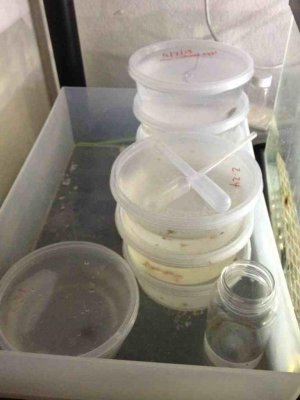zeroinverse
New member
This thread will be used to track a "photo log" of Berghia Nudibranch and how they grow/develop over time.
The egg batch was collected from my berghia adults tank on 4/8/2013.
They may have been in there for a few extra days.
Thanks to Colin (cbrennan4) and his office's high power microscope... We will be trying to take photos often to show their development.
The egg batch was collected from my berghia adults tank on 4/8/2013.
They may have been in there for a few extra days.
Thanks to Colin (cbrennan4) and his office's high power microscope... We will be trying to take photos often to show their development.












